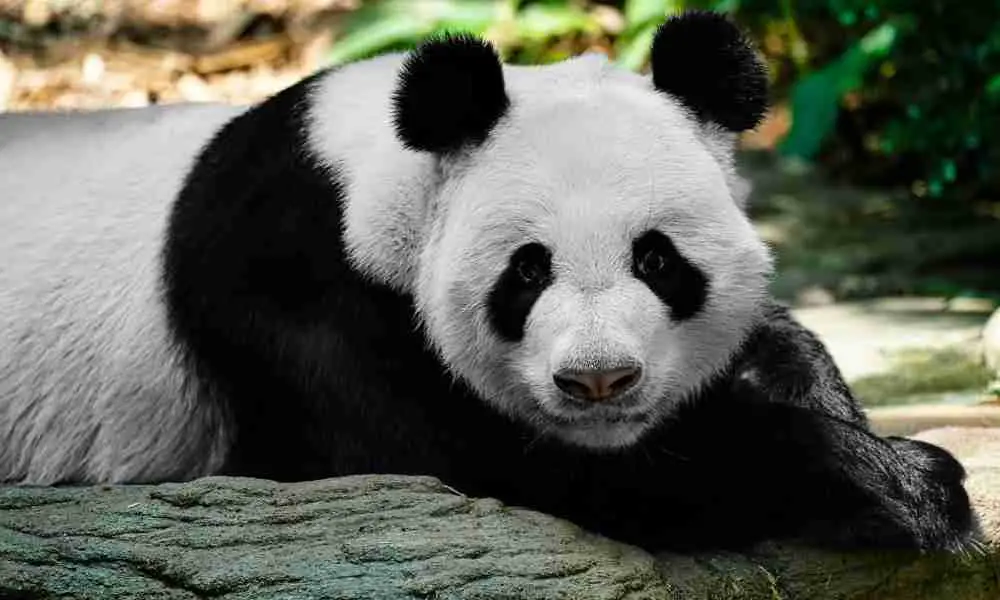The giant pandas’ black and white colors have remained a mystery for a long time. So why the black and white color? Let’s analyze the answer.
The giant panda’s black and white color has two main functions: communication and camouflage. The white body color of the panda helps it hide in the snow, while the black body spot helps it hide in the shade.
Giant pandas have distinctive facial colors to communicate with other pandas.
The black ad white fur in giant pandas makes them look good. Follow through as we talk more about these species’ black and white fur.

The Science Behind The Black and White Fur
Mammals have color patterns to match their surroundings, except for pandas and zebras, which have sharp black and white patterns.
Giant pandas have a unique black and white color patterns different from similar species making it hard to understand their evolution.
However, here are a few theories that exist about the black and white fur:
- The color patterns make it look aggressive
- The white color is used as camouflage in the snow
- The dark-colored fur retains heat in cold areas
- The dark spots around the panda’s eyes reduce the daytime glare
- The color patterns are used for communication among the same species.
Camouflage

The white fur covering the animal’s face, nape, back, flank, belly, and rump are adapted for camouflage against snowy areas.
Its dark shoulders and legs provide crypsis in the shade.
Panda ecology determines giant panda coloration: pandas must constantly find food because they eat a poor diet and never store sufficient body fat to hibernate.
Pandas cannot molt their fur fast enough to match their background because they are always looking for their next meal, like other carnivores. As a result, they developed a “compromise” pattern and coloration of black-and-white fur.
This means that their environments quickly change from light snow to dark forest shade. So, the pattern is a bit of a compromise regarding camouflage.
The white bodies and heads of pandas blend in with snow, while their black limbs can hide in the shadows of trees and plants.
This type of defensive coloration is seen in giant pandas, particularly those with at least 60 meters longer viewing ranges.
The outline of the panda becomes difficult to recognize at these distances. The black fur spots blend into the rocks and tree trunks in the background.
Communication

The black markings on the giant panda’s head are not used for camouflage. Instead, they are used for communication. Pandas use their black ears to show aggression against predators.
The dark patches around their eyes help pandas recognize each other or show hostility against other competitors.
Final Thoughts
Giant pandas have black and white fur mainly for camouflage. Their fur color is adapted to the environment they live in and come in handy when they’re looking for food.
Pandas have to adjust in different manners than other mammals because they can’t store enough fat to hibernate.
That means they are active all year and travel a long way and through different environments to get food.
This makes them an easy target. And that’s where their fur comes in. They use their black and white fur to camouflage with the different surroundings in their path.
Furthermore, giant pandas’ black patches help them communicate both amongst themselves and other species.
If you find this article helpful, share it with your friends!

